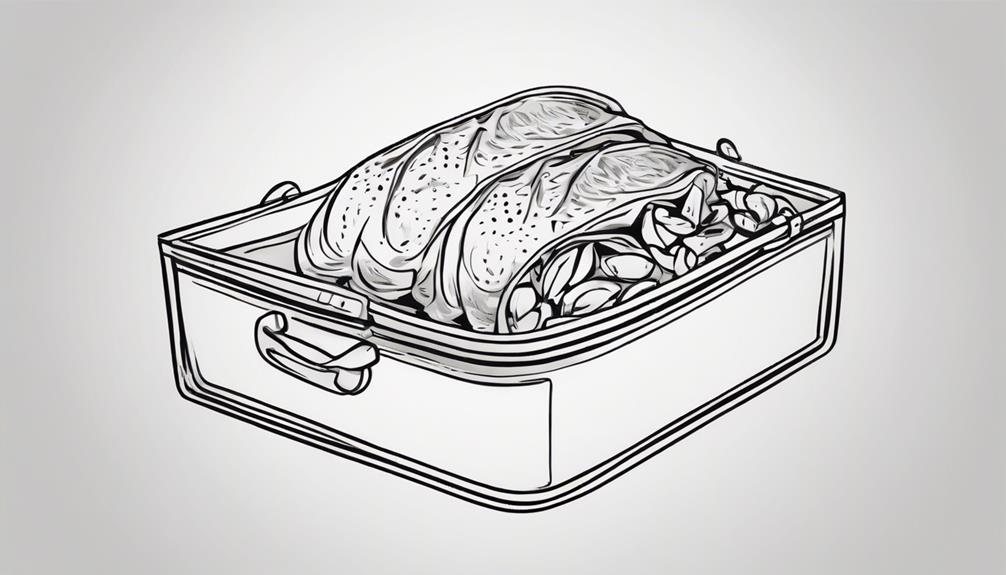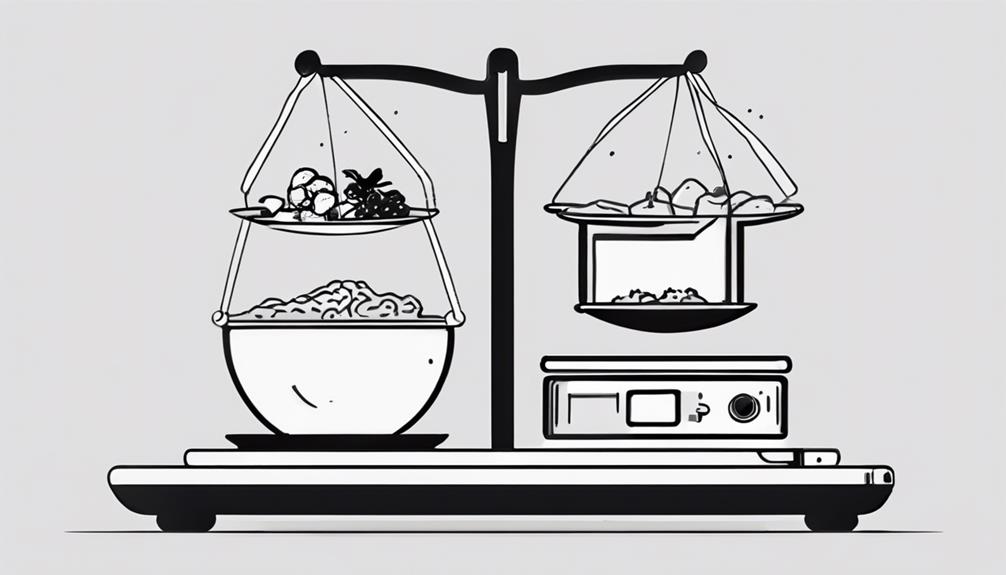In understanding human behavior and decision-making processes, a fundamental question often arises: what distinguishes needs from wants? This differentiation is not merely a semantic debate but holds significant implications for individual well-being and societal progress. By exploring the underlying psychological, sociological, and economic principles that govern our desires and necessities, we can unravel the intricate tapestry of human motivation and consumption patterns. Stay tuned to uncover the intricate interplay between our inherent needs and acquired wants, shedding light on the complexities of human nature and societal development.
Key Takeaways
- Needs are essential for survival, wants are desires for comfort.
- Understanding needs aids in resource allocation.
- Prioritizing essential needs ensures survival.
- Wants go beyond necessities, impacting quality of life.
Defining Needs and Wants

In the realm of human requirements, there exists a fundamental distinction between needs and wants. Human needs are the basic necessities essential for survival and optimal functioning. These include fundamental requirements such as food, water, shelter, and medical care. Needs are indispensable for sustaining life and promoting health and well-being.
On the other hand, wants are desires that exceed the basic necessities required for survival. They encompass items or experiences that enhance the quality of life but are not essential for existence. Wants may include luxury goods, entertainment, or leisure activities that contribute to comfort and enjoyment.
Differentiating between needs and wants is crucial in decision-making processes to effectively allocate resources. Understanding this disparity is beneficial for prioritizing expenditures, setting achievable goals, and enhancing overall life satisfaction. It is imperative to address needs before fulfilling wants to ensure a secure and healthy life foundation. By recognizing and fulfilling human needs first, individuals can establish a solid groundwork for pursuing their wants and aspirations.
Distinguishing Essential Needs
Differentiating essential needs from non-essential desires is a critical aspect of prioritizing resources effectively. Essential needs are basic requirements essential for survival, encompassing fundamental elements such as food, water, shelter, and medical care. These basic needs are crucial for maintaining health and well-being, forming the foundation upon which a safe and secure life is built. By recognizing and prioritizing essential needs over wants or desires, individuals can ensure that they address the most critical aspects of human survival first. Meeting essential needs is a fundamental step in securing a stable and healthy lifestyle, as these necessities are prerequisites for sustaining life. Understanding the distinction between basic needs and wants is paramount for making informed decisions regarding resource allocation and ensuring that limited resources are directed towards fulfilling essential requirements before addressing other desires. Prioritizing essential needs lays the groundwork for a sustainable and secure existence, promoting overall well-being and longevity.
Identifying Additional Wants

Understanding the distinction between needs and wants is fundamental in managing one's resources effectively. Identifying additional wants involves recognizing desires that go beyond basic survival requirements, encompassing items that bring comfort or pleasure. By pinpointing luxurious desires and prioritizing non-essential wants, individuals can make informed decisions regarding their spending habits and financial priorities.
Identifying Luxurious Desires
Identifying luxurious desires involves discerning between essential needs crucial for survival and non-essential desires that cater to comfort or status. Luxury cars, designer clothing, and extravagant vacations often fall into the category of luxurious wants rather than essential needs. While essential needs are necessary for basic survival, luxurious desires are typically items or experiences that enhance one's quality of life beyond basic necessities. These additional wants are influenced by personal preferences, societal norms, and individual values. Recognizing luxurious desires is essential for making informed financial decisions and prioritizing spending effectively. By differentiating between essential needs and luxurious wants, individuals can practice conscious consumption and engage in thoughtful financial planning to achieve a balanced and fulfilling lifestyle.
Prioritizing Non-essential Desires
Prioritization of non-essential desires involves a strategic evaluation of wants beyond fundamental necessities like food and shelter. When identifying additional wants, it is important to consider various factors to make informed decisions. Here are three key aspects to consider when prioritizing non-essential desires:
- Impact on Psychological Needs: Assess how the non-essential desire contributes to your emotional well-being and fulfillment of psychological needs.
- Value of Luxury Items: Evaluate the significance of luxury items in enhancing your quality of life compared to other non-essential desires.
- Long-term Satisfaction: Consider whether prioritizing certain non-essential desires will lead to long-term satisfaction and overall well-being.
Understanding Human Needs
Human needs encompass a spectrum of basic physiological requirements essential for survival and higher-order needs related to personal growth and fulfillment. Understanding human needs is crucial as they form the foundation of human behavior and well-being. Scholars like Maslow, Marx, and Doyal have provided valuable insights into the complexities of human needs, shedding light on their significance from various perspectives. The study of human needs spans across multiple disciplines, including philosophy, biology, psychology, and social work, highlighting the interdisciplinary nature of this subject. Social needs, such as the need for social connection and belonging, are integral to shaping individual behaviors and fostering overall well-being.
| Category | Description |
|---|---|
| Physiological Needs | Basic requirements for survival such as air, water, food, shelter, sleep |
| Safety Needs | Needs for security and protection from physical and emotional harm, stability in life |
| Social Needs | Needs for belonging, love, and affection, importance of relationships and social connections |
| Esteem Needs | Needs for self-esteem, respect from others, achievement, recognition, status in society |
Psychological Perspectives on Needs

Various psychological perspectives shed light on human needs, with Abraham Maslow's Hierarchy of Needs being a prominent framework. Maslow's theory categorizes needs into different levels, from basic physiological requirements to higher-order self-actualization needs. Understanding these psychological perspectives can offer valuable insights into how individuals prioritize and fulfill their needs in various contexts.
Basic Human Needs
In exploring the psychological perspectives on needs, it is essential to delve into the concept of basic human needs which encompass fundamental physiological requirements crucial for human survival. These physical needs are essential for sustaining life and well-being. Here are three key components of basic human needs:
- Food: The intake of nutrients is vital for energy production, growth, and overall health.
- Water: Hydration is necessary for various bodily functions and to maintain optimal health.
- Shelter: Protection from the elements and a safe environment are essential for physical well-being.
Understanding and meeting these basic human needs are foundational steps in addressing higher-level psychological needs for personal growth and fulfillment.
Maslow's Hierarchy
Exploring the psychological perspectives on needs, Maslow's Hierarchy of Needs stands as a foundational framework that outlines the hierarchical progression of human requirements from basic physiological necessities to self-fulfillment aspirations. Maslow's Theory of Human Motivation includes five levels: physiological, safety, love/belonging, esteem, and self-actualization. According to this theory, individuals must first satisfy lower-level needs before progressing to higher ones. Maslow believed that self-actualization, the realization of one's full potential, represents the highest level of human development. This model highlights the evolution from essential survival needs to more complex psychological and self-fulfillment needs. Widely influential, Maslow's Hierarchy of Needs provides valuable insights into human motivation and behavior across various disciplines.
Economic View on Wants
The economic perspective on wants delves into the non-essential desires for goods and services that drive consumer behavior and influence market dynamics.
- Individual Preferences: Economic views on wants emphasize that wants are shaped by individual preferences, which vary among different consumers. These preferences are influenced by factors such as culture, income levels, and personal values, impacting the types of goods and services individuals desire.
- Consumer Behavior: Understanding wants is crucial in analyzing consumer behavior within the market. Consumers make choices based on their wants, and these choices drive demand for certain products or services. Studying consumer behavior regarding wants helps economists predict market trends and develop marketing strategies to meet consumer demands effectively.
- Market Influence: Wants play a significant role in influencing production and consumption patterns in the economy. The interplay between consumer wants and market dynamics determines which goods and services are produced, the pricing strategies employed, and the overall allocation of resources within the economy. By studying wants, economists gain insights into how markets function and evolve over time.
Differentiating Needs From Wants

Understanding the distinction between needs and wants is paramount for efficient resource management. Differentiating between essential needs and desirable wants allows individuals to prioritize effectively. Clarifying basic needs from luxuries aids in making informed decisions regarding the allocation of resources.
Essential Vs. Desirable
Distinguishing between essential needs and desirable wants is a fundamental aspect of resource allocation and decision-making in human societies.
- Importance of Essential Needs: Essential human needs are crucial for survival and basic functioning. These include fundamental requirements like food, shelter, and healthcare, which are necessary for sustaining life and health.
- Nature of Desirable Wants: Wants, on the other hand, encompass desires beyond essential needs, such as luxury items, entertainment, or leisure activities. These are not vital for survival but contribute to quality of life and comfort.
- Resource Prioritization: Understanding the difference between essential needs and desirable wants is essential for prioritizing resource allocation effectively. Meeting essential needs first ensures basic well-being and stability before addressing wants, aiding in overall life satisfaction.
Basic Needs Clarified
A critical aspect of resource allocation and decision-making in human societies involves clearly differentiating between fundamental needs essential for survival and desires that surpass basic necessities. Basic needs encompass vital requirements such as food, water, shelter, and medical care that are indispensable for sustaining life. On the other hand, wants are non-essential desires that extend beyond the fulfillment of basic needs and may include luxury items or experiences. Understanding the distinction between needs and wants is paramount for effective prioritization and allocation of resources. By recognizing that needs are crucial for ensuring a safe and healthy existence while wants are supplementary to enhance quality of life, individuals and societies can make informed choices that prioritize essentials over non-essentials.
Prioritizing Wants Efficiently
Efficiently prioritizing wants involves a strategic analysis of essential needs like food and shelter versus non-essential desires such as luxury items.
- Evaluate Necessity: Determine if a want is truly essential for your well-being or if it is merely a fleeting desire.
- Impact Assessment: Consider how fulfilling a want will affect your overall quality of life and happiness.
- Resource Allocation: Allocate resources first to fulfill needs, ensuring survival and basic well-being, before fulfilling wants that enhance your lifestyle.
Examples of Essential Needs

What are some examples of essential needs crucial for basic survival and well-being? Essential needs encompass fundamental requirements for sustaining life and ensuring overall well-being. Among these, food stands as a primary necessity, providing vital nutrients and energy essential for bodily functions. Alongside food, shelter plays a critical role in safeguarding individuals from environmental elements and providing a secure space for rest and protection. Access to clean water is another indispensable need, supporting hydration and sanitation to maintain health.
Furthermore, medical care and healthcare services are imperative for addressing illnesses, injuries, and preventative care, contributing to overall well-being and longevity. Safety and security, encompassing aspects like stable housing and a secure living environment, are crucial for fostering a sense of protection and stability. Educational opportunities and knowledge access are essential for personal and professional growth, enabling individuals to acquire skills and information vital for advancement. Emotional support, relationships, and social connections are equally vital needs, nurturing mental and emotional health. By recognizing and fulfilling these essential needs, individuals can establish a foundation for a healthy and fulfilling life.
Examples of Additional Wants
In contrast to essential needs crucial for basic survival and well-being, additional wants encompass desires for luxury items and experiences that go beyond fundamental requirements. Some examples of additional wants include:
- New Car: Upgrades to existing possessions, such as purchasing a new car model, fall under additional wants. While a reliable vehicle for transportation is a need, opting for a brand-new luxury car can be considered a want that goes beyond basic functionality.
- Luxury Items: Luxury items like designer clothing, high-end electronics, or extravagant vacations are often desired as additional wants. These items are not essential for survival but cater to individuals seeking comfort, status, or indulgence.
- Exclusive Experiences: Wants can extend to experiences such as fine dining, spa treatments, or attending exclusive events. These activities provide pleasure and entertainment beyond what is necessary for basic living.
Prioritizing Needs Over Wants

Prioritization of essential needs over discretionary wants is a fundamental principle in achieving financial stability and overall well-being. When it comes to resource allocation, distinguishing between basic needs and wants is crucial. By focusing on fulfilling basic needs first, such as food, shelter, and healthcare, individuals can ensure their survival and well-being before satisfying non-essential desires. This approach involves making conscious decisions about where to allocate limited resources, ensuring that critical requirements are met before addressing luxuries that enhance quality of life. The table below illustrates the difference between basic needs and wants, emphasizing the importance of prioritizing necessities for long-term stability and goal achievement.
| Category | Basic Needs | Wants |
|---|---|---|
| Definition | Necessary for survival | Enhances quality of life |
| Examples | Food, shelter, healthcare | Latest gadgets, luxury items |
| Importance | Critical for well-being | Improve quality of life |
Impact of Fulfilling Needs Vs. Wants
Fulfilling needs versus wants directly impacts an individual's overall well-being and financial stability by ensuring basic survival necessities are met before addressing non-essential desires. When considering the impact of meeting needs versus fulfilling wants, several critical points emerge:
- Essential Survival: Meeting needs focuses on essential survival requirements like food, shelter, and healthcare. These are fundamental for sustaining life and promoting physical health.
- Quality of Life: Fulfilling wants typically involves desires beyond essential needs, such as luxury items or entertainment. While these can enhance quality of life, they are not crucial for survival.
- Balancing Priorities: Prioritizing needs over wants is crucial for maintaining a healthy and sustainable lifestyle. Neglecting basic needs in favor of fulfilling wants can lead to detrimental consequences, impacting both physical health and mental well-being. Achieving a balance between meeting needs and fulfilling wants is essential for overall well-being and long-term financial stability.
Balancing Needs and Wants

Achieving a harmonious equilibrium between essential requirements and discretionary desires is paramount for sustainable financial health and overall well-being. Balancing needs and wants involves prioritizing basic needs such as food, shelter, and healthcare over non-essential wants like luxury items or entertainment. To help illustrate this concept further, the following table contrasts basic needs and essential requirements with discretionary wants:
| Basic Needs | Essential Requirements |
|---|---|
| Food | Healthcare |
| Shelter | Education |
| Healthcare | Clothing |
| Safety | Transportation |
Understanding the difference between these categories is crucial for making informed decisions regarding resource allocation and budgeting. By evaluating the importance of fulfilling basic needs for survival before addressing discretionary wants, individuals can work towards achieving financial stability and maintaining overall well-being. Effectively managing needs and wants contributes to a balanced and fulfilling life, ensuring that essential requirements are met while still allowing for the enjoyment of discretionary desires within reasonable limits.
Final Thoughts on Needs and Wants
In reflecting on the distinction between needs and wants, it becomes evident that the conscientious evaluation of these categories plays a fundamental role in shaping one's financial decisions and overall quality of life.
- Resource Allocation: Understanding the difference between needs and wants helps individuals allocate resources efficiently. By prioritizing essential needs over non-essential wants, individuals can ensure that their basic requirements are met before indulging in luxuries, leading to a more stable financial position.
- Satisfaction and Fulfillment: Prioritizing needs over wants can result in overall satisfaction and fulfillment. By securing fundamental necessities first, individuals create a sense of security and well-being that forms the foundation for pursuing desires beyond essential needs.
- Balanced Lifestyle: By recognizing and acknowledging the difference between needs and wants, individuals can maintain a balanced lifestyle. This balance ensures that while aspirations and desires are pursued, they do not jeopardize the fulfillment of basic requirements, leading to a harmonious and sustainable way of living.
Frequently Asked Questions
What Is the Different Between Need and Want?
In distinguishing between needs and wants, the fundamental disparity lies in the nature of these requisites. Needs encompass basic necessities crucial for survival and well-being, such as food, water, shelter, and healthcare. In contrast, wants represent desires that extend beyond essential requirements, often manifesting as luxury items, entertainment, or travel. Recognizing this contrast is vital for resource allocation, decision-making, and fostering a balanced and fulfilling life.
What Are Examples of Needs and Wants?
Examples of needs are essential for survival and basic functioning, such as food, water, shelter, and clothing. Wants, on the other hand, encompass luxury items like the latest smartphone, designer clothing, or luxury vacations. Needs are necessities critical for daily life, while wants are desires driven by personal preferences or societal influences. Distinguishing between needs and wants helps prioritize spending and focus on fulfilling essential requirements before indulging in desires.
What Is the Difference Between Needs and Wants Essay?
The distinction between needs and wants is fundamental in understanding human behavior and decision-making processes. Basic necessities are vital for survival, encompassing essentials like food, shelter, and healthcare. On the other hand, consumer desires reflect materialistic cravings for non-essential items such as luxury goods and entertainment. Recognizing this contrast is crucial for prioritizing expenses, budgeting effectively, and ensuring that essential requirements are met before satisfying discretionary wants.
What Are the 10 Examples of Wants?
Consumer behavior and economic theory intersect when discussing wants. Examples of wants in consumer behavior may include luxury goods like high-end electronics, designer clothing, or gourmet dining experiences. Economic theory emphasizes the subjective nature of wants, driven by individual preferences and societal influences. Understanding these distinctions helps individuals make informed spending decisions, prioritizing needs over wants, and fostering responsible consumption habits.
Conclusion
In conclusion, distinguishing between needs and wants is crucial for effective decision-making and prioritization. By recognizing the essentiality of needs for survival and the nature of wants as desires that enhance quality of life, individuals can better allocate resources and focus on fulfilling basic necessities before indulging in non-essential luxuries. Balancing the fulfillment of needs and wants is a continuous process that requires mindful consideration of priorities and a clear understanding of human needs.
